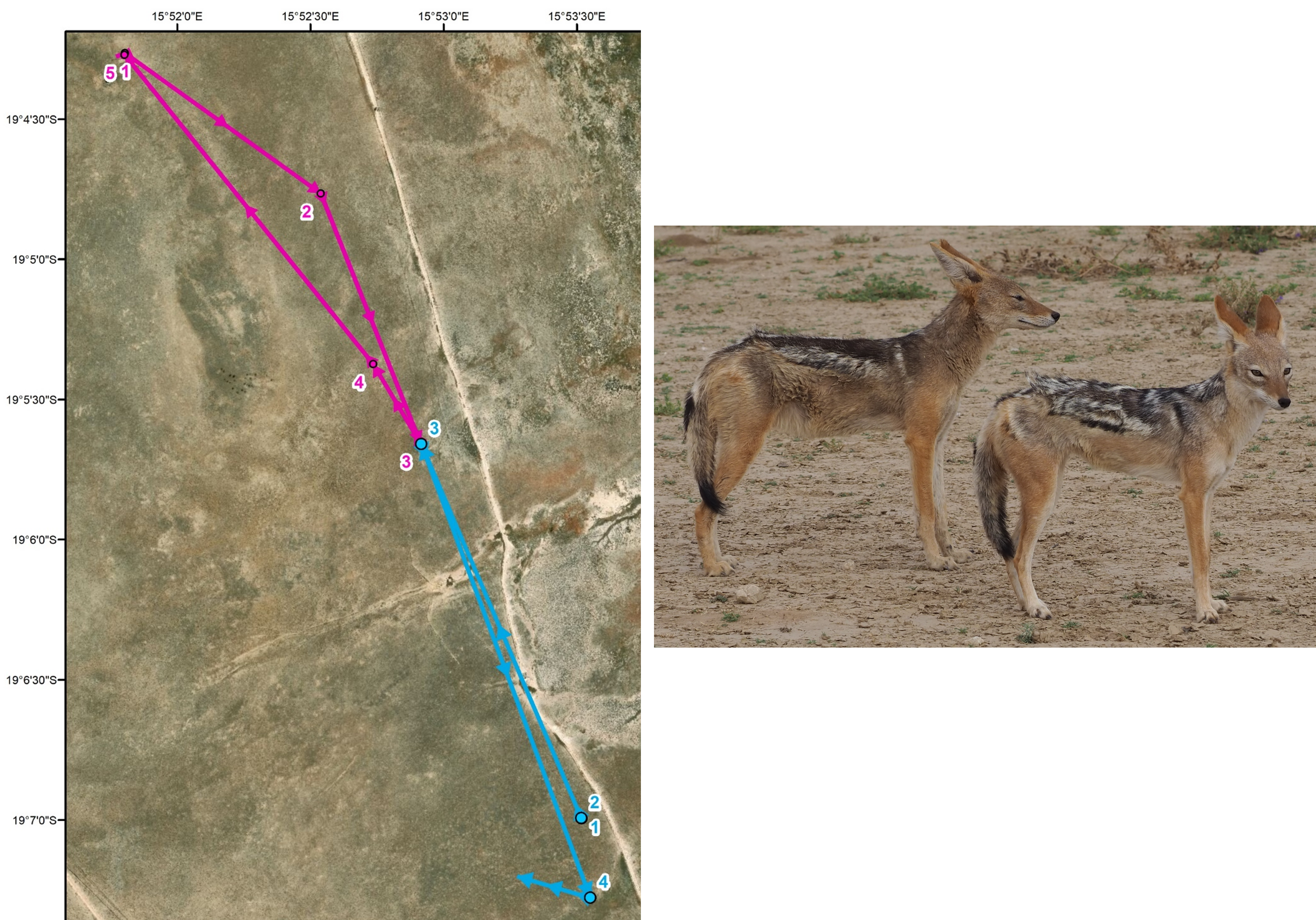New paper in Geographical Analysis discusses how spatial analysis can contribute to spatial justice: Making space in Geographical Analysis
Category: publication
2 new papers from NYMPHS project
Two new forensic palynology papers from our MURI-funded NYMPHS project were recently published.
Daoqin Tong (ASU) led the effort to develop GOFIND, a geocomputational network model to help identify “spatial footprints” or likely locations associated with an object.
Eddie Helderop (UT-Austin) was lead author on a  that further refined the GOFIND model using modified social network analysis tools.
that further refined the GOFIND model using modified social network analysis tools.
New paper on quantifying dynamic interactions
This paper explores combining point-based and path-based dynamic interaction metrics to explore whether movement differences associated with proximity can be detected. Differences in simulated trajectories for ovement parameters ranging from step length and relative angle to more complex parameters such as persistence index were tested. Movement was often different for simulated ‘leader’ and ‘follower’ trajectories, and different interaction-related movement behaviors were explored using data on black-backed jackals in Etosha National Park.

A spatial exploration of the ‘halo effect’ in the 2016 US presidential election
Was the ‘halo effect’ (proportion of immigrants in surrounding area) correlated with GOP vote proportion in the 2016 election? The halo effect has been studied in Europe, where it has often been correlated with far-right voting patterns. This paper examines the halo effect and uses geographically weighted regression to explore whether the effect varies spatially.

Special issue in IJGIS
I joined Janet Franklin (UC-Riverside), Shawn Laffan (University New South Wales), & Andrew Skidmore (University of Twente) to edit a special issue on Spatial Ecology in IJGIS, “Modeling movement, distributions, diversity, and disturbance.”
Book chapter on Tapir movement
Jennifer and 2 of her former and current doctoral students (Cody Schank and Brendan Hoover, respectively) published a chapter on the impact of Hurricane Otto on Baird’s Tapir movement in Nicaragua in Movemen t Ecology of Neotropical Forest Mammals
t Ecology of Neotropical Forest Mammals
New paper on Science of Movement in IJGIS
Jennifer was a co-author on a new foresight paper with Harvey Miller, Somayeh Dodge, and Gil Bohrer: ‘Towards an integrated science of movement: converging research on animal movement ecology and human mobility science.” This paper was a result of two NSF-funded workshops on movement analysis in Nov. 2016 (UT-Austin) and May 2017 (OSU).
PhD student Cody Schank lead author in Diversity & Distributions paper
Cody Schank (PhD expected 2018) is the lead author of a collaborative paper that compares different statistical methods to model the potential distribution of Baird’s Tapir. The abstract is below and the article can be found here:
Aim
We test a new species distribution modelling (SDM) framework, while comparing results to more common distribution modelling techniques. This framework allows for the combination of presence-only (PO) and presence-absence (PA) data and accounts for imperfect detection and spatial bias in presence data. The new framework tested here is based on a Poisson point process model, which allows for predictions of population size. We compared these estimates to those provided by experts on the species.
Species and Location
Presence data on Baird’s tapir (Tapirus bairdii) throughout its range from southern México to northern Colombia were used in this research, primarily from the years 2000 to 2016.
Methods
Four SDM frameworks are compared as follows: (1) Maxent, (2) a presence-only (PO) SDM based on a Poisson point process model (PPM), (3) a presence-absence (PA) SDM also based on a PPM and (4) an Integrated framework which combines the previous two models. Model averaging was used to produce a single set of coefficient estimates and predictive maps for each model framework. A hotspot analysis (Gi*) was used to identify habitat cores from the predicted intensity of the Integrated model framework.
Results
Important variables to model the distribution of Baird’s tapir included land cover, human pressure and topography. Accounting for spatial bias in the presence data affected which variables were important in the model. Maxent and the Integrated model produced predictive maps with similar patterns and were considered to be more in agreement with expert knowledge compared to the PO and PA models.
Main conclusions
Total abundance as predicted by the model was higher than expert opinion on the species, but local density estimates from our model were similar to available independent assessments. We suggest that these results warrant further validation and testing through collection of independent test data, development of more precise predictor layers and improvements to the model framework.
New article on analyzing dynamic interactions
A new paper that continues my research on analyzing dynamic interactions using GPS data has just been published. This article employs a null model approach to assess how six currently used dynamic interaction metrics vary in terms of the type and magnitude of interaction they measure. ‘Towards a better understanding of dynamic interaction metrics for wildlife: a null model approach‘ (also see ‘Using spatially explicit simulated data to analyze animal interactions: a case study with brown hyenas in northern Botswana‘). This work will be presented as part of a special Frontiers in GIScience Research session at the ESRI User Conference July 22, 2015.
This research is supported by NSF #1424920.
Progress Report editorship at PiPG
I was recently invited to serve as the Progress Report editor for Progress in Physical Geography. This will entail commissioning short (5000 words max) papers that cover new developments in an area related to some aspect of geomorphology, climatology, biogeography & landscape ecology, or human-environment interaction.